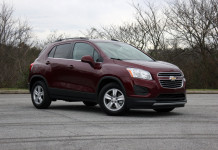General Motor’s first real experiment with an electric vehicle, the Volt, hasn’t had the best of luck in the past few months. After a battery fire sparked controversy when it engulfed a test car at the National Highway Traffic Safety Administration’s (NHTSA) facility, a full-blown investigation took place. During that time, Chevrolet took responsiblity for the potential issue even going as far as offering loaner cars to Volt owners. This was all done in order to buy enough time so that both GM and the NHTSA could figure out why the fire occurred and what could be done to stop it. It would appear that the goal was accomplished and with it are a few key enhancements to the car.
The issues were born from both the Volt’s structure and battery cooling system. A Customer Satisfaction Program will be launched so that modifications can be performed on public cars. The safety structure will be strengthened to further protect the battery pack in a severe side impact. A tamper-resistant bracket will be added to the top of the battery coolant reservoir to prevent overflow while a sensor will be installed to monitor coolant levels. “These enhancements and modifications will address the concerns raised by the severe crash tests,” said Mary Barra, GM senior vice president of Global Product Development. To make sure that these would indeed help the Volt, Chevrolet performed four crash tests between December 9 and 21. All featured the enhancements and all were successful.
“There are no changes to the Volt battery pack or cell chemistry as a result of these actions. We have tested the Volt’s battery system for more than 285,000 hours, or 25 years, of operation. We’re as confident as ever that the cell design is among the safest on the market.” Starting this month, Chevrolet will build Volts with these enhancements installed. But for the already rolling customer cars, the brand will begin contacting their respective owners shortly. The modifications will be performed at certified dealers.
Source: Chevrolet








